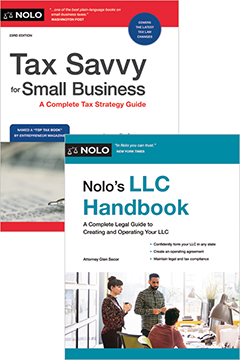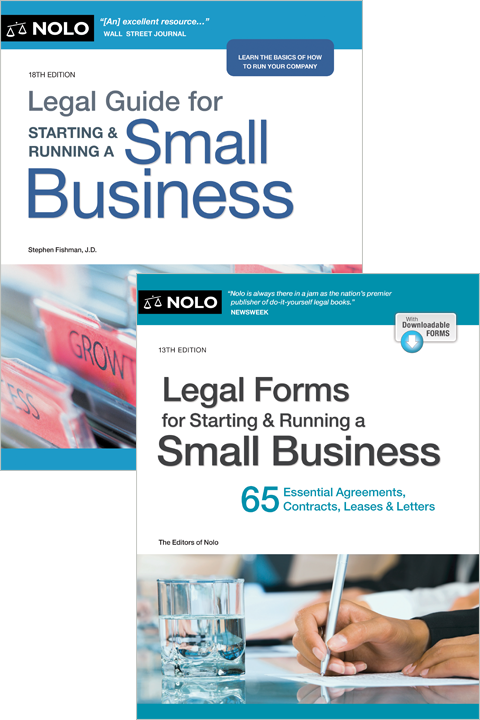The basics of property taxes in a commercial lease agreement, including how you should divide taxes between the landlord and tenants.
With a triple net lease, the tenant is responsible for paying for some or all of the landlord's property taxes, insurance, and maintenance costs for the building in addition to rent. Before you sign a lease, you should negotiate your portion of these costs, including the property taxes.
Keep these two important issues in mind as you head into lease negotiations:
- Is your portion of the tax bill based on the total rentable space of the property, or on the space that's, in fact, rented?
- Have other tenants' improvements caused the tax bill to grow—and are you indirectly paying for the consequences of these fancy improvements?
How Are Property Taxes Calculated?
A property's tax bill is calculated by multiplying the local tax rate by the property's assessed value. Depending on where the property is located, you might have a city (or town) and county tax rate applied to the property's bill. You might also see additional fees, such as police department, fire department, and solid waste costs.
Sometimes the tax rate is shown as a percentage. For example, suppose the county tax rate is 2%. If your property is worth $200,000, then your tax bill will be $4,000, or 2% of $200,000.
Other times, the tax rate is shown as a fraction of a dollar per every $100 of your property's assessed value. For instance, suppose your county tax rate is $0.65 per $100 of your property's value, and your property is assessed to be worth $100,000. So, you would owe 65 cents for every $100 your property is worth. To calculate your tax bill, you'd divide your property's value by 100 and multiply that number by 0.65. So your tax bill would be $650, or $100,000/100 x 0.65.
You can check with your city or county's tax office to find out how your tax bill is calculated.
How to Allocate Taxes Between Landlord and Tenant
If you're going to be the landlord's sole renter, it won't be hard to allocate the tax burden between the two of you. Depending on who has the superior bargaining position, either you'll get stuck with:
- the entire bill
- a portion of the entire bill (the landlord pays the rest), or
- all or a portion of any increase (if property taxes rise from year to year).
While taxes can be divided multiple ways between the landlord and tenant, there are two methods often used—sometimes together—in triple net leases.
Landlord Pays First Year of Taxes, Tenant Pays for Any Increases
A common way to place tax responsibility on the tenant is for the landlord to agree to pay all real property taxes for the first year of the lease (sometimes called the "base year"). Then, after the first year, you pick up all or a portion of any increase in the property tax.
For example, suppose Spartan Enterprises leases a small building from Urban Developers for five years. The lease says that in years two through five of the lease, Spartan will pay 50% of any increase in real property taxes beyond the first year amount.
Taxes are $3,000 for year one and are paid entirely by Urban. In year two, taxes go up to $3,300. Spartan owes $150 in real property taxes in year two (50% of the $300 increase). Urban pays the remaining $3,150.
A landlord might, however, ask you to pay for more than just the tax increases. You could be asked to pay for all real property taxes, or to split real property taxes 50/50 with the landlord. A shrewd landlord could also set the base year several years in the past—when the tax bill was lower than it is now—so that you immediately begin paying the increase.
Rentable Space vs. Rented Space
If you're going to pay all or a part of the landlord's real property taxes, it's important that the lease clause specify that you'll pay according to your percentage of the property's total rentable space—not the space that happens to be rented when you sign your lease.
If you pay according to the total space that happens to be rented at the time, you can end up paying an enormous portion of the tax bill if there are significant vacancies in the building.
For instance, suppose California Sew and Vac rented 2,000 square feet of the total rentable area of 10,000 square feet in Larry Landlord's building. Sadly for Larry, only half of the total space (5,000 square feet) is actually rented out. Sew and Vac has a triple net lease that obligates it to pay for a portion of Larry's property taxes.
There are two ways to compute Sew and Vac's portion of the taxes:
- According to the rented space. Larry Landlord would like the calculation to be the result of dividing the amount of space leased by Sew and Vac by the amount of space actually leased in the building, or 2,000 divided by 5,000. Sew and Vac's portion of the taxes would be 40%. The other tenant (or tenants) pays 3,000 divided by 5,000, or 60% of the bill. The tenants together pay 100% of the tax, and Larry pays nothing.
- According to the rentable space. Sew and Vac would like the calculation to be the result of dividing the space it leases by the total rentable area, or 2,000 divided by 10,000. Using this method, Sew and Vac's tax obligation would be 20%. The remaining tenant (or tenants) will pay 30% (3,000 divided by 10,000). The tenants together pay 50%, and Larry Landlord pays 50% of the tax bill.
You can see why a landlord would prefer to base your tax responsibility on the rented—not rentable—area of the building. Under the first system, the landlord will pass the risk of an empty building onto the tenants—whoever's there will divide the bill among themselves. Under the second system, however, the landlord will pay taxes for the unrented space.
If you see (or expect) significant chunks of vacant space in the building, try hard for a lease clause that bases your share of taxes on the building's rentable space. If it's a hot property with vacancies unlikely and apportionment is based on rented space, you won't have much to worry about.
Capping Property Taxes in a Triple Net Lease
When you negotiate the lease, ask to see the landlord's property tax bill for the preceding year. If you're asked to pay all or a portion, you'll know the amount—for now. But it's not likely to remain static. The tax amount could rise because:
- The city or county tax rate changes. The city (or town) or county where the commercial property is located will apply a tax rate for real property. The tax rate is used to determine a property's taxes. The city or county could increase the tax rate from year to year, which would increase the tax bill. Check with your city or county's tax division to find the current rate.
- The building is reassessed. It pays to find out when the tax figure was last adjusted for the property. (This information is available from the local tax assessor.) If it was recently changed, chances are that you won't see a change in the near future. But if the taxes have remained the same for several years—and especially if property values in the neighborhood have increased or the landlord has improved your building—a tax increase might be in store. Be prepared.
- The building is sold. If real estate values increase substantially and the landlord sells the property for a handsome sum, the real estate taxes will probably go up. The fact that the new owner must honor your lease will be a cold comfort when you get a monstrous tax bill for your share of the increase.
For these reasons, it's great to get a binding promise that you'll be excused from paying taxes over a stated amount. This guarantee will protect you from additional taxes if a reassessment or building sale results in higher taxes.
How to Allocate Taxes Between Tenants
In a multitenant building, many tenants can share the tax burden. In a property with other tenants, you might have neighbors who've put in expensive, value-adding improvements, such as:
- equipment for a restaurant
- fancy décor, or
- extensive computer wiring for an office suite.
(Improvements are permanent additions to the landlord's property, as opposed to trade fixtures that tenants usually remove when the tenancy ends.)
You, on the other hand, might end up adding little or nothing to the value of the property when you move in, asking only for a new carpet, paint, and some special lighting. What's the problem?
Calculating the Property's Taxable Value
Your landlord's real estate tax bill is based on the taxable value of the entire property, which is computed by considering the sum of all tenants' improvements. Suppose your tax obligation is based on your pro rata share of the rentable space, without taking into consideration the fact that your neighbors' valuable improvements have upped the tax bill significantly. In that case, you'll be paying more than your fair share.
One way to even things out is to bargain for your tax obligations to be based on your pro rata share of the taxable value of the entire property, instead of your pro rata share of the entire rentable space. That way, you pay according to the value of your space.
It's unlikely that you can get the tax assessor to separately value individual tenants' spaces in a commercial building. The best way to estimate your fair share of taxable value is to:
- Assume that the cost to rebuild the entire property, with each tenant's improvements as they are now, is roughly equivalent to the taxable value of the property (if the tax assessors have been doing their job, these figures should be close).
- Assume that your share of the rebuilding costs (expressed as a percent, by dividing the cost of rebuilding your space by the cost of rebuilding the entire property) will be the same as your share of the property's taxable value. That's the percentage multiplier that you apply to the tax bill to compute your fair share.
Example: Calculating Tenants' Tax Obligations
Suppose a small strip mall in Pacific Cove has three commercial spaces and 10,000 square feet available.
Tenant A leases 2,000 square feet for an auto repair shop. A adds a hoist, automatic garage doors, a heavy-duty ventilation system, and extensive electrical wiring, all of which became permanent improvements, to their shop. Rebuilding this space would cost $150 per square foot.
Tenant B leases 5,000 square feet to use as a distribution center for dry goods. B adds nothing to the bare space when they moved in. To rebuild would cost $50 per square foot.
Tenant C leases the remaining 3,000 square feet and adds interior walls and some lights for use in their telemarketing business. Rebuilding costs for this space would be $65 per square foot.
The tenants all have triple net leases, which are all up for renegotiation.
Table 1, below, shows what happens to each tenant's tax obligation if it's figured on the basis of that tenant's portion of the rentable space only. In this table, the rent isn't adjusted for the individual value of each tenant's space.
Table 2 shows what happens to each tenant's taxable share when the landlord figures it according to the value of each tenant's rented space. In this table, the tenants' improvements are accounted for in the rent calculation.
Table 1: Allocating Taxes According to Rentable Space
|
Tenant |
Rented space (square feet) |
Rentable space |
Ratio (rented space/rentable space) |
Tenant's share of the taxes |
|
A (extensive improvements) |
2,000 |
10,000 |
20% |
20% of the total |
|
B (added nothing) |
5,000 |
10,000 |
50% |
50% of the total |
|
C (moderate improvements) |
3,000 |
10,000 |
30% |
30% of the total |
Table 2: Allocating Taxes According to Replacement Value
|
Tenant |
Replacement cost per square foot |
Rented space, square feet |
Cost to replace own space |
Replacement cost of entire property |
Tenant's share of replacement costs |
Tenant's share of the taxes |
|
A (extensive improvements) |
$150 |
2,000 |
$300,000 |
$745,000 |
40.3% |
40.3% |
|
B (added nothing) |
$50 |
5,000 |
$250,000 |
$745,000 |
33.6% |
33.6% |
|
C (moderate improvements) |
$65 |
3,000 |
$195,000 |
$745,000 |
26.1% |
26.1% |
As you can see from comparing the results of Tables 1 and 2, the tax burdens on A, B, and C will be quite different if the landlord allocates them according to the value each has brought to the property, instead of the size alone of their rentals.
Tenant A in particular, who brought in many expensive improvements, will pay twice as much according to the replacement value method. If you happen to be Tenant A, no doubt you'll prefer the system shown in Table 1—but it wouldn't be the fairest way of dividing the tax burdens.
When you negotiate with the landlord over how taxes are allocated among tenants, remember that it must be the same for all tenants in the building. The landlord will be constrained by the terms of the leases already in place with other tenants. Absent some extraordinary clout on your part, it's unlikely you'll be able to accomplish this.
Returning to our previous example, suppose Tenants A and C are already renting under triple net leases that allocate taxes according to the size alone of their spaces. Tenant B won't be able to press for a replacement value system unless they can get the landlord and A and C to rewrite A's and C's leases. Tenant B could potentially convince C, but they'd have a hard time getting A on board when it means that A would be doubling their share of the costs.
However, there's no reason why the system has to remain the same forever. If you have a lease that's longer than other tenants in the building, press for a planned switch to a value-based method when all existing tenants are out. Negotiate for a promise from the landlord that all new tenants will be given space-based tax obligations only until all space-based tenants have left. At that point, all of you will convert to a value-based system.
Consulting an Attorney
When you're calculating the property taxes and each party's fair share, it can be hard to coordinate the appropriate distribution method. If you and your landlord are at odds or you and the other tenants favor different allocation methods, it can be a good idea to reach out to a contracts lawyer that has experience with commercial leases. An attorney can walk you through the pros and cons of each valuation approach and help you and the other side reach a fair agreement.



